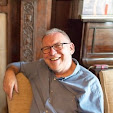The Year of Living Dangerously
was a 1982 Australian film about a love affair set in Indonesia during the
overthrow of President Sukarno. Helen Russell cleverly punned on the film's
title when she wrote her (completely unrelated) 2015 book about her experiences of living in Denmark –
The Year of Living Danishly.
The book's blurb explains: "When
she was suddenly given the opportunity of a new life in rural Jutland, journalist
and archetypal Londoner Helen Russell discovered a startling statistic: the
happiest place on earth isn’t Disneyland, but Denmark, a land often thought of
by foreigners as consisting entirely of long dark winters, cured herring, Lego
and pastries. What is the secret to their success? Are happy Danes born, or
made? Helen decides there is only one way to find out: she will give herself a
year, trying to uncover the formula for Danish happiness..."
Russell's book is a light-hearted
and entertaining read but the belief that Denmark enjoys a high level of
wellbeing is supported by good evidence. In 2006-7, Huppert and So measured the
prevalence of flourishing across the (then) 22 countries of the European Union
(Huppert & So, 2009). Data from 43,000 adults was surveyed to ascertain the
percentage of Europeans who could be said to be flourishing. It was found
Eastern European countries tended to have lower levels of wellbeing while
Scandinavian countries enjoyed the highest.
So, studying what can be learnt
from the Danish way of life could be a very valid exercise. Helpfully, at the
end of The Year of Living Danishly, Russell provides her Top
ten tips for living Danishly. These might be summarised as:
1. Trust others (more) - avoid unnecessary
stress by trusting others more which, in turn, will improve their behaviour
2. Get hygge - Enjoy the cosy,
simple pleasures of life
3. Use your body - Move more, exercise
more
4. Address the aesthetics - attend to your
environment, enjoy good design and clean, tidy everyday surroundings
5. Streamline your options - Reduce the
stress of too many options by adopting simplicity and freedom within boundaries
6. Be proud - Take ownership of something
you and your community do well and celebrate it
7. Value family - reach out to relatives
and put your family and friends first
8. Equal respect for equal work -
Caregiving and breadwinning are equally important
9. Play - a playful, creative activity is
a worthwhile occupation at any age
10. Share - sharing makes life easier, and,
even if we can't easily influence our government to create a Danish-style
welfare state, we can begin by being more neighbourly.
Russell's list may seem a bit
flippant or fanciful but it has much in common with the wellbeing 'five-a-day'
produced by the New Economic Foundation (NEF) - an evidence-based list
of five actions to be incorporated into day-to-day lives to promote wellbeing (Aked
et al., 2008). The NEF's list was:
•
Connect
•
Be active
•
Take notice
•
Keep learning
•
Give
It's worth reflecting on how much
we incorporate these actions into our lives. The NEF wellbeing 'five-a-day' and
Russell's Top ten tips for living Danishly are worthy of serious
consideration. It seems there is indeed much more we could learn from the land of
long dark winters.
References
Aked, J.,
Marks, N., Cordon, C. & Thompson, S. (2008). Five ways to wellbeing: The
evidence. London: New Economics Foundation.
Huppert, F. (2008). Psychological
well-being: Evidence regarding its causes and its consequences. London: Foresight Mental Capital and
Wellbeing Project.
Huppert, F. & So,
T. (2009). What percentage of people in Europe are flourishing and what
characterizes them? Cambridge: The Wellbeing Institute, Cambridge
University.
Russell, H.
(2015). The year of living Danishly. London: Icon Books.





No comments:
Post a Comment